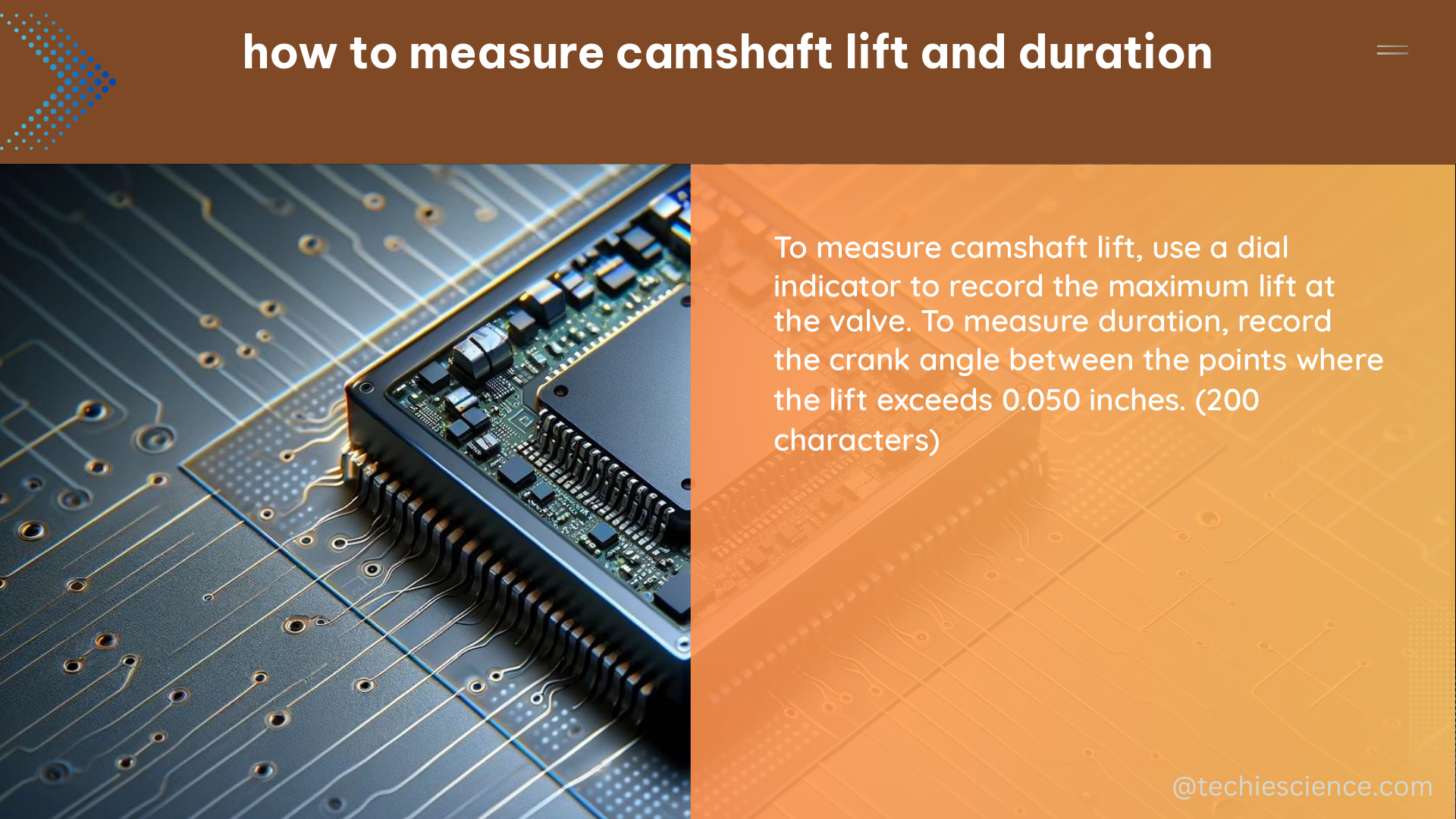Measuring camshaft lift and duration is a crucial step in engine tuning and optimization. This comprehensive guide will walk you through the process of accurately measuring these critical parameters, providing you with the technical knowledge and practical steps to become a true expert in the field.
Understanding Camshaft Lift and Duration
Camshaft lift refers to the maximum distance the valve opens from its closed position, while duration is the number of crankshaft degrees the valve remains open. These two factors play a significant role in an engine’s power output, efficiency, and overall performance characteristics.
Necessary Tools and Equipment

To measure camshaft lift and duration, you will need the following tools:
1. Dial indicator: This precision instrument will be used to measure the lift of the camshaft lobe.
2. Degree wheel: Mounted on the crankshaft, this tool will allow you to accurately track the crankshaft rotation and determine the valve opening and closing points.
3. Timing light: This device will help you synchronize the degree wheel with the engine’s timing marks.
Step-by-Step Measurement Procedure
- Install the Degree Wheel: Secure the degree wheel to the crankshaft pulley, ensuring it is properly aligned with the timing marks on the engine.
- Mount the Dial Indicator: Carefully position the dial indicator on the camshaft journal, making sure it is in contact with the camshaft lobe.
- Zero the Dial Indicator: Rotate the engine slowly until the camshaft lobe is at its lowest point, and then zero the dial indicator.
- Measure Lift: Slowly rotate the engine until the camshaft lobe reaches its maximum lift point, and record the measurement from the dial indicator. Repeat this process at various points around the lobe to ensure accuracy.
- Measure Duration: Continue rotating the engine until the valve just begins to open, and record the degree mark on the degree wheel. Then, rotate the engine further until the valve is fully closed, and record the degree mark again. The difference between these two readings is the valve’s duration, measured in crankshaft degrees.
Factors Affecting Measurement Accuracy
When measuring camshaft lift and duration, it’s important to consider the following factors that can impact the accuracy of your results:
– Camshaft design: Flat or curved base circle profiles can affect the measurement process.
– Engine configuration: The number of valves per cylinder and the overall engine layout may require adjustments to the measurement technique.
– Valve train components: The condition and alignment of the rocker arms, pushrods, and other valve train components can influence the measurements.
Calculating Camshaft Overlap
To estimate the amount of camshaft lope, you can use the following equation:
Overlap = (Intake Duration + Exhaust Duration) / 4 – (Lobe Separation Angle * 2)
This formula takes into account the intake and exhaust durations, as well as the lobe separation angle (LSA), to provide an approximation of the overlap period when both the intake and exhaust valves are open simultaneously.
Conclusion
Mastering the art of camshaft lift and duration measurement is a crucial skill for engine builders, tuners, and enthusiasts. By following the detailed steps and considering the various factors that can affect the accuracy of your measurements, you can become a true expert in this field and optimize your engine’s performance to its fullest potential.
Reference Links:
- How to Measure Camshaft Lift – YouTube
- How to Measure Lift and Duration on Cams – TCCoA Forums
- How can you check the lift and duration of a cam – Corral.net
- Measuring camshaft duration and lift – YouTube
- Camshaft Idle Lope… How to “Guess” How Much There Will Be? – LS1tech Forums

The lambdageeks.com Core SME Team is a group of experienced subject matter experts from diverse scientific and technical fields including Physics, Chemistry, Technology,Electronics & Electrical Engineering, Automotive, Mechanical Engineering. Our team collaborates to create high-quality, well-researched articles on a wide range of science and technology topics for the lambdageeks.com website.
All Our Senior SME are having more than 7 Years of experience in the respective fields . They are either Working Industry Professionals or assocaited With different Universities. Refer Our Authors Page to get to know About our Core SMEs.